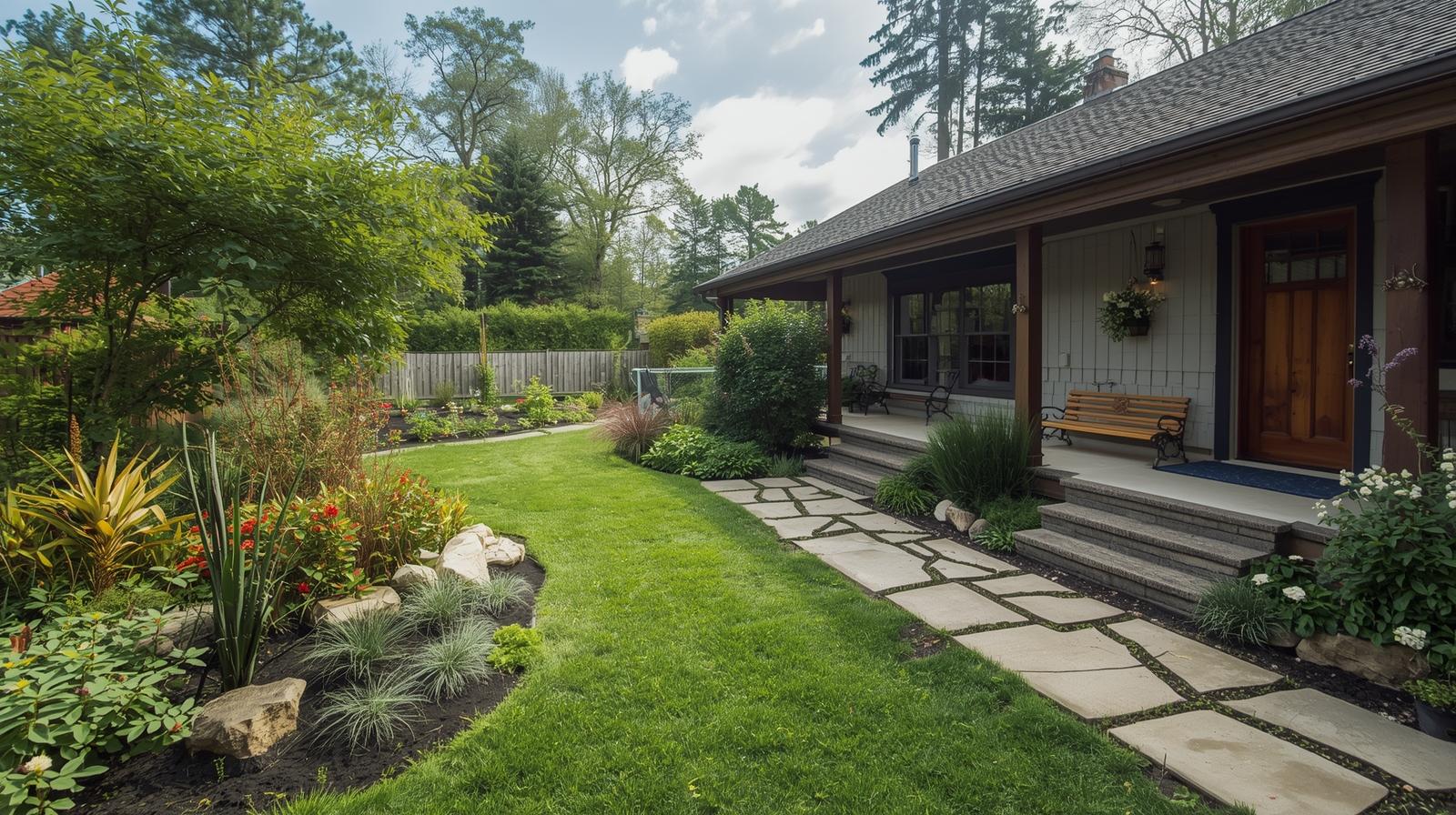Creating a Habitat Garden for Overwintering Wildlife
When temperatures drop and gardens go quiet, not every creature flies south.
Many birds, bees, butterflies, and beneficial insects stay right here in Metro Atlanta, relying on local landscapes to survive the colder months.
By designing your yard with wildlife in mind, you can transform it into a safe, sustainable winter refuge — all while keeping your landscape beautiful and full of life.
At LawnMart, we believe a thriving yard isn’t just about plants — it’s about supporting the entire ecosystem that makes your garden flourish.
1.
Why a Habitat Garden Matters in Fall and Winter 🌾
As leaves fall and flowers fade, natural food and shelter sources become scarce.
Creating a habitat garden provides:
Food for overwintering birds and pollinators.
Shelter from cold, wind, and predators.
Nesting and hibernation spots for next spring’s pollinators.
Biodiversity that keeps your landscape balanced and healthy.
🐦 LawnMart insight: A wildlife-friendly yard supports nature and reduces pest problems naturally — it’s a win-win for you and the environment.
2.
Leave a Little “Wild” in Your Garden 🍂
One of the easiest ways to support wildlife in winter is to not clean up everything.
Instead of raking and trimming your garden bare, leave a few natural features in place:
Seed heads from coneflowers, sunflowers, and grasses — provide food for birds.
Leaf piles — create warm, safe shelter for insects, frogs, and small mammals.
Dead stems or logs — offer nesting spots for native bees and overwintering butterflies.
🌿 LawnMart tip: You can still keep things tidy! Group leaves in designated “habitat corners” or behind shrubs for a natural look with ecological benefits.
3.
Plant for Pollinators and Wildlife 🌸
Choose native plants and shrubs that provide year-round interest — from fall berries to early spring blooms.
Wildlife-Friendly Plants for Metro ATL Gardens:
Beautyberry (Callicarpa americana): Bright purple berries for birds.
Holly: Evergreen cover and winter food source.
Asters and goldenrods: Late blooms that feed pollinators before winter.
Native grasses (Little Bluestem, Switchgrass): Shelter and nesting material.
Serviceberry: Spring flowers and summer fruit.
🌼 LawnMart idea: Mix evergreens and native perennials for color, texture, and wildlife value all year long.
4.
Provide Water All Year 💧
Even in cold months, animals and birds need access to fresh water.
Easy Options:
Keep a heated bird bath or shallow dish filled and clean.
Add a few flat stones so insects and birds can drink safely.
Refill often, especially during dry winter spells.
🐦 LawnMart product pick: Our low-energy bird bath heaters and frost-safe planters make it easy to maintain water sources through winter.
5.
Build Shelter for Overwintering Wildlife 🪵
Different creatures need different types of winter shelter — here are a few simple additions that make a big difference:
Birdhouses & roosting boxes for songbirds.
Bee hotels or bundled hollow stems for native solitary bees.
Brush piles from trimmed branches for chipmunks and wrens.
Rock piles or log stacks for toads and small reptiles.
🏡 LawnMart insight: Avoid using pesticides during winter prep — they can harm beneficial insects that hibernate in soil and mulch layers.
6.
Add Winter Interest for You, Too 🌿
A habitat garden doesn’t have to look messy — it can be beautiful and functional.
Landscaping ideas for Metro ATL yards:
Use ornamental grasses for movement and structure.
Add winterberry hollies or camellias for color.
Mix mulch and stone borders to define your garden areas while still allowing wildlife access.
🍁 LawnMart tip: Try layering texture — combine mulch, decorative rock, and evergreen borders to balance beauty and function.
7.
Start Small and Grow Each Season 🌱
Creating a habitat garden doesn’t have to happen overnight.
Start with one section of your yard — maybe a pollinator patch or bird corner — and expand each season.
Simple first steps:
Skip the fall cleanup in one bed.
Add a water source.
Plant a few native shrubs or perennials.
Leave a leaf pile or brush bundle through winter.
🌳 Every small step helps build a healthier, more vibrant ecosystem.
Support Your Local Ecosystem with LawnMart
At LawnMart Metro ATL, we’re passionate about helping homeowners create outdoor spaces that are beautiful, sustainable, and wildlife-friendly.
We offer:
Native plants, shrubs, and grasses perfect for Georgia’s climate.
Eco-friendly mulch, compost, and organic fertilizers.
Bird baths, feeders, and pollinator garden kits.
Local delivery and seasonal landscape guidance.
🐝 This fall, give back to nature — and watch your garden come alive again next spring.
Visit LawnMart.com or stop by our Metro Atlanta location to get started.
Creating a Habitat Garden
for Overwintering Wildlife
